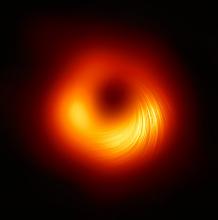Listen to today's episode of StarDate on the web the same day it airs in high-quality streaming audio without any extra ads or announcements. Choose a $8 one-month pass, or listen every day for a year for just $30.
You are here
Quiet Sun
The Sun has been unusually “quiet” in recent years — the quietest in more than a century. And forecasters say there’s a good chance it’ll be even quieter over the next few decades.
The Sun’s level of activity is determined by its magnetic cycle. On average, a cycle lasts about 11 years. The Sun is most active at the cycle’s peak, when it can be covered by dozens of sunspots and produce big outbursts of energy and charged particles. These outbursts can knock out power grids on Earth, damage orbiting satellites, and disrupt our technology in many other ways.
Astronomers have been watching the solar cycles for four centuries. And they’ve been counting them since 1755. Right now, we’re near the end of Cycle 24.
The most active solar cycle ever recorded peaked in the early 1960s. The cycles since then have been weaker. And the current one is the weakest since the early 1900s. Over the last few years, in fact, there have been dozens of days when there were no sunspots at all.
And scientists say that trend could continue. Early forecasts call for Cycle 25 to be even weaker than the current one, with Cycle 26 weaker still. In fact, we could be heading into a period of weakness that could rival the Maunder Minimum — a period in the 17th and 18th centuries where the Sun was almost comatose. If so, then the Sun could remain quiet through the end of the century — giving our technology a break from our star’s disruptive effects.
Script by Damond Benningfield





